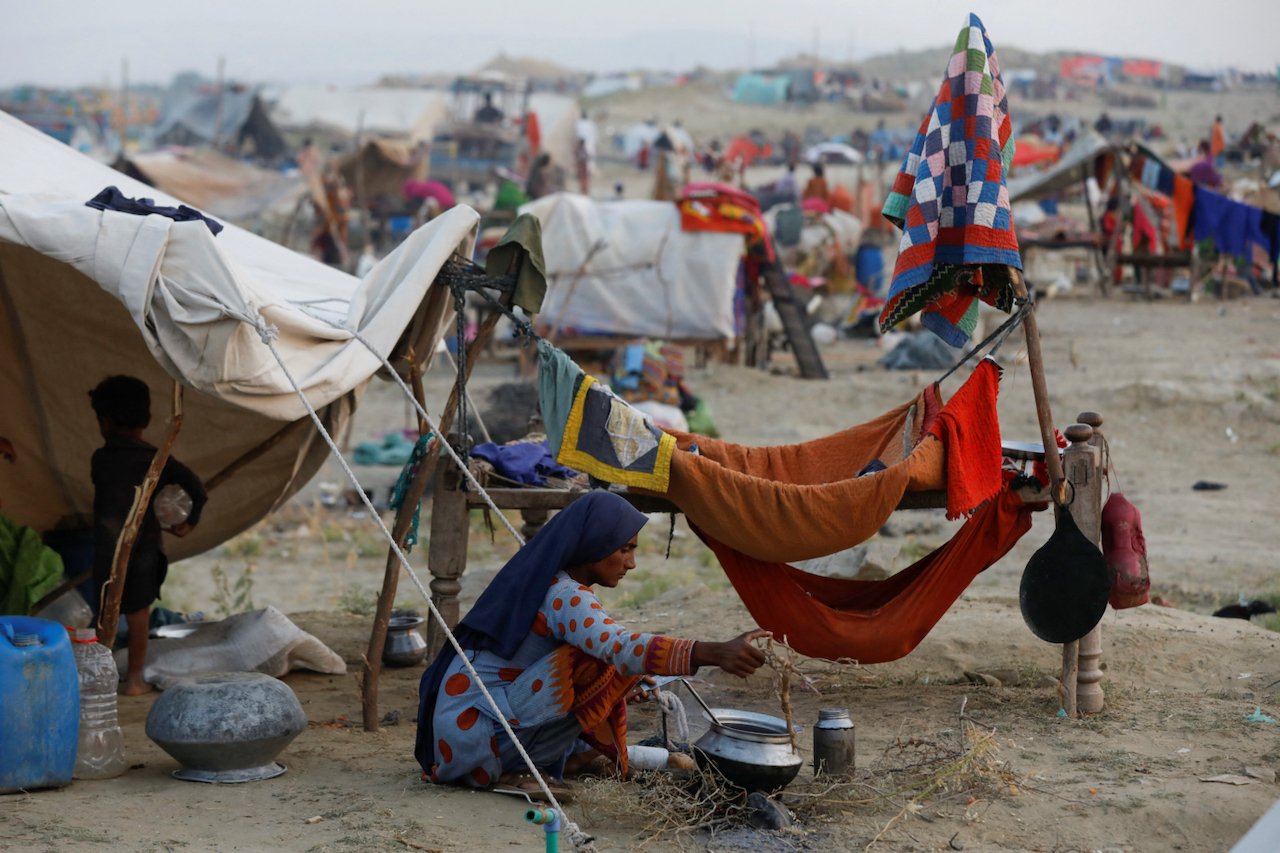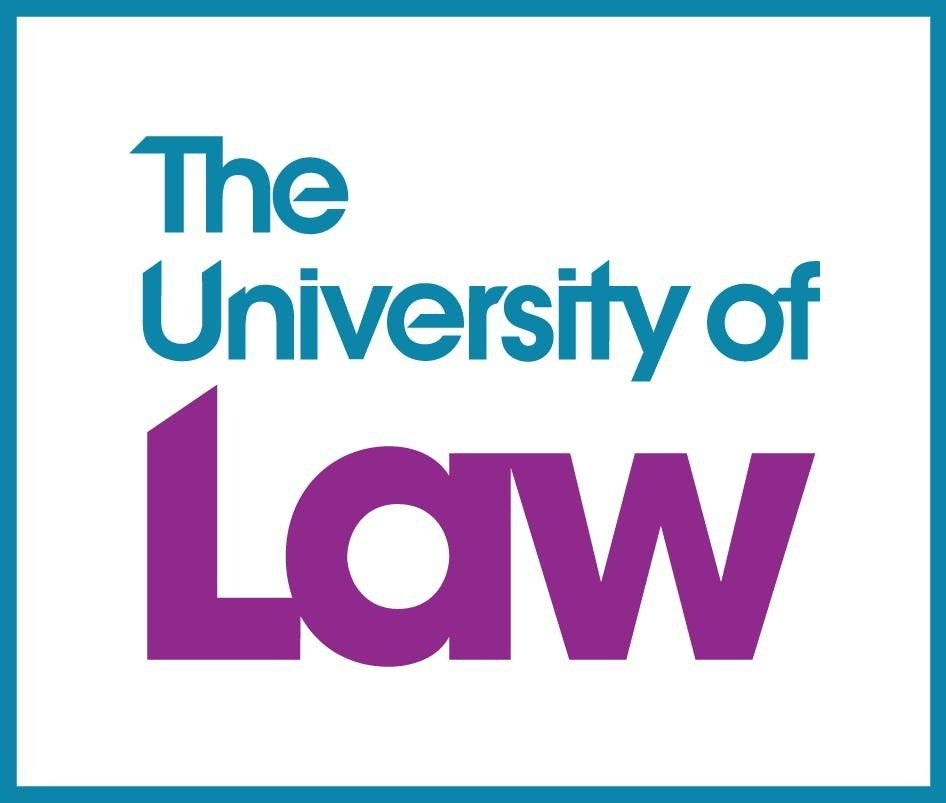In recent years, small island states across the world have had to grapple with a terrifying prospect that could upend the entirety of their populations’ futures— the lands under their current jurisdictions might one day no longer exist. The problem? International law currently offers such states no protection or guidance on how to address this monumental challenge. According to Tegart’s study focused on the science of climate change referenced by the United Nations’s Intergovernmental Panel on Climate Change1, environmental scientists estimate that a 30 cm - 50 cm rise in sea level will occur by 2100. This would leave Small Island Developing States (SIDS) completely ‘uninhabitable’.2 The populations of such states, which span from the Maldives and Kiribati to Tuvalu and Seychelles, could be forced to flee the only lands they have ever known in order to survive, but despite the gravity of the situation, these ‘climate-forced migrants’ currently receive no recognition under public international law.3 Such a gap in international legal frameworks has meant that not only do climate-forced migrants face barriers to obtaining appropriate protections, but also that the international community, and perhaps even the United Nations, have little incentive to support these small states which bear the brunt of the consequences of global warming.
Firstly, it is important to emphasise that, notwithstanding the frequent use of the term ‘climate refugees’ in mass media, climate-forced migrants are not refugees as defined by the 1951 Refugee Convention4, and therefore do not hold the same rights and obligations. According to the 1951 Refugee Convention, Article 1 establishes a refugee to be a person who “owing to well-founded fear of being persecuted for reasons of race, religion, nationality, membership of a particular social group or political opinion, is outside the country of [their] nationality and is unable or, owing to such fear, is unwilling to avail [themself] of the protection of that country”.5 Because environmental degradation is not defined as a reason for leaving one’s country and climate-forced migrants are not classed into the same category as refugees, such persons do not possess the right to seek asylum. Additionally, such persons are not protected from being returned to their country of origin, as established by the principle of non-refoulement in Article 33.6 Even regional international legal frameworks for refugees such as the Cartagena Declaration, do not recognize threats from climate change as serious enough to warrant protection for fleeing one’s homeland; rather, such defined threats include “massive violations of human rights”, “internal conflicts”, “foreign aggression”, etc.7
Secondly, beyond the lack of consideration for refugee status, climate-forced migrants living in Small Island Developing States- which one day may not exist if overtaken by rising sea levels- face the unique challenge of not knowing how their current citizenship status impacts their nationality and identity in the future. To elaborate, the 1954 Convention Relating to the Status of Stateless Persons defines a “stateless person” as someone “who is not considered as a national by any State under the operation of its law.8 There are several rights accorded to stateless persons as stated by this Convention, including access to courts, right of association, housing, freedom of movement, etc.9 However, all of these rights are not available to, for instance, citizens of the Maldives, because they currently possess Maldivian citizenship and therefore hold the rights and obligations that the Maldivian government can provide. The challenge then, is what happens to their citizenship status when their state no longer exists. According to Article 1 of the Montevideo Convention on the Rights and Duties of States, a state needs to meet four criteria in order to be recognized as such under international law: 1) a permanent population; 2) a defined territory; 3) a government; and 4) the capacity to enter into relations with other states.10 Without any of these, especially an established territory, Small Island Developing States are confronted with the possibility of their entire statehood being called into question. This would not just remove the rights of hundreds of thousands of people, but would also threaten the very foundation of their national and cultural identities.
Currently, public international law has no mechanisms in place, whether binding or non-binding, to resolve these migration issues. At the same time, governments of Small Island Developing States have been forced to start planning for the future survival of their peoples. Some states such as Kiribati are exploring the option of ‘permanent relocation’, or moving the entire population to other territories11, which requires either the permission of another state or the coordination of an international body such as the United Nations to step in. Other states such as the Maldives have chosen a different course of action- the creation of new territory through the development of artificial islands.12 For the latter option, the issue with this is that artificial islands do not provide the same legal claim to defined territory, and thus statehood, as ‘natural’ land or islands do. According to the United Nations Convention on the Law of the Sea [UNCLOS], Article 60(8) states that “Artificial islands, installations and structures do not possess the status of islands. They have no territorial sea of their own, and their presence does not affect the delimitation of the territorial sea, the exclusive economic zone or the continental shelf.”13 As such, in order for the Maldives or other Small Island Developing States to continue to be recognized as states alongside their development of artificial islands, our modern conceptualization of statehood would either need to change, or the UNCLOS would have to be amended. Amending the UNCLOS would be incredibly difficult, and not only because it has never been done before. Article 313 establishes that it only takes one state party to object to a proposed amendment/proposal via the simplified procedure for the amendment to be rejected.14 Moreover, because formal amendments are not binding, there is a chance that states will start following different parts of the treaty than others, leading to challenges with enforcement.15
Subsequently, regardless of the measures chosen to combat climate change, the separation of island states’ governments from their original territories poses unprecedented challenges to the current dynamics of territorial sovereignty and statehood. Therefore, without consensus from the international community, it is difficult for public international law in its current form to provide necessary legal protections to climate-forced migrants. Furthermore, even when some states or bodies like the United Nations advocate on behalf of such migrants, there is often no follow through from the international community due to a lack of political motivation to become involved as well as a lack of consequences for ignoring the issue. Additionally, it should be noted that states found to be the highest emitters of carbon dioxide - and thus the worst contributor to the climate crisis - often demonstrate a complete lack of perceived responsibility for finding solutions to the issue.
However, there is perhaps an even more disturbing facet of this beyond governments’ general disregard for climate-forced migrants. Even if emitter states were willing to support populations whose statehood is being threatened- whether that be through support with resettlement, financial compensation, humanitarian assistance, etc.- vulnerable populations of territories like the Small Island Developing States might actually lose their right to claim future compensation in court based on the violation of their fundamental human rights if they try to settle the matter today. Although there have not been notable cases yet of small island states taking action against such states, it is worth examining a similar case that may serve as a precedent for future legal disputes in this area: Chagos Islanders v. the United Kingdom16. In the Chagos Islanders’ case, the populations of the Chagos Islands, an overseas territory of the United Kingdom in the Indian Ocean, was taking legal action against the U.K. government for the degrading treatment they received after being forcibly evicted from 1967 to 1973 so that the U.K. could turn the islands into a military base for the United States.17Accordingly, the Chagos Islanders had filed their claim in the European Court of Human Rights (ECHR) based on the alleged violation of several of their human and political rights established in the United Nations’s International Covenant on Civil and Political Rights (ICCPR),18 such as the right to security of person and property (Art. 9).19 However, because the Chagos Islanders had already settled the case in domestic courts and obtained compensation, they were not entitled to claim any damages as victims of a breach of the European Convention on Human Rights.20 Thus, the ECHR did not hold the jurisdiction to pronounce a judgement on the issue.21 Although these claimants did not receive a desired outcome, their case is highly relevant to the current plight of climate-forced migrants for several reasons. Firstly, the Chagos Islanders case demonstrates that international law does not currently have the proper safeguards to protect the populations of Small Island Developing States if they attempt to claim compensation from one emitter state today and later want to claim additional compensation from a different emitter state in the future, even if multiple states are found to contribute to the destruction of island territories through environmental impact. Secondly, particular details of the case, such as the commentary from interveners like Human Rights Watch and Minority Rights Group International, reveal that although international law protects island states in theory, existing human rights instruments lack practical solutions to support vulnerable island populations when their collective rights are being breached. For instance, according to the 2007 UN Declaration on the Rights of Indigenous Peoples, indigenous populations possess “the right not to be subjected to forced assimilation or destruction of culture, the right not to be forcibly removed from lands or territories, [and] the right to redress for lands, territories and resources that have been taken”.22 The challenge with enforcing this declaration is understanding how to proceed when indigenous peoples are forcibly displaced as a result of external environmental action such as climate change, rather than human-led actions such as government intervention or war. Ultimately, as international law currently stands, states cannot demand compensation when there is no instigating party, which is unfortunate for Small Island Developing States as they face the lack of any other legal recourse.
Nevertheless, all of this is not to say that there is no progress being made in advancing protections for a person’s right to a climate free from environmental degradation. On the contrary, there have been great advances in recent years with regards to environmental protection in international law; however, these protections have not necessarily connected to climate-forced migrants due to the complexity - and controversial nature - of issues such as statehood and territory. However, last year the United Nations General Assembly made the historic move of adopting a resolution recognizing the human right to a healthy environment, which previously had been recognized in late 2021 by the Human Rights Council (HRC).23 Although there is currently no universal definition of a ‘healthy environment’, such a right most likely includes the right to clean air and water, acceptable sanitation, “healthy biodiversity and ecosystems”, and a “safe climate”.24 The importance of this resolution for the development of international environmental law cannot be understated. Its enshrinement paves the way for states to undergo “constitutional and/or legislative reform to recognize this right” in federal constitutions and laws, and also makes it easier to integrate into international treaties and water and sanitation regulations.25
In addition, over the last few years, advocates in international criminal law have tirelessly campaigned to incorporate a new crime into the Rome Statute, the treaty serving as the foundation of the International Criminal Court [ICC].26 This act, referred to as ‘ecocide’, would criminalise “mass damage and destruction of ecosystems – severe harm to nature which is widespread or long-term”.27 Examples of such mass ecological destruction include “ocean damage, deforestation, land and water contamination, [and] air pollution”.28 Although this integration into criminal law would not directly benefit climate-forced migrants, it would serve justice to the perpetrators of the climate harm that the Small Island Developing States suffer from the most. Moreover, according to the advocates of ecocide law, making it an international crime is crucial because it would render the people “responsible for acts or decisions that lead to severe environmental harm liable to criminal prosecution.”29 Such an act would also make prosecuting ecocide just as much of a priority for the international community as taking action against heinous crimes like crimes against humanity, genocide, war crimes, and crimes of aggression.30 Although ecocide is not yet an official international crime, the progress made in raising awareness about environmental destruction provides hope that public international law can evolve to meet the needs of vulnerable populations in a world increasingly being impacted by climate change.
Finally, perhaps the most optimistic development in environmental law is the recent case brought by young people against “thirty-two governments, including all EU member states, the UK, Norway, Russia, Switzerland and Turkey” who accuse such governments of failing to take appropriate measures against the dangers of climate change, as well as their excessive emissions of greenhouse gases like carbon dioxide.31 Furthermore, the young people involved are claiming that by refusing to act in favour of the environment, states are destroying the future of their youth and harming their physical and mental health.32 Moreover, in relation to international law, “they claim that their fundamental human rights - including 5
the right to life, privacy, family life and to be free from discrimination - are being violated due to governments' reluctance to fight climate change”.33 Currently, a verdict is expected to be reached sometime between 2024-2025, and the claimants are not seeking any form of financial compensation.34If it is successful, the case - which is the first of its type to be filed at the ECHR - could have lasting legal implications on governmental action towards climate change, as the ECHR’s judgement would be legally binding and enforce governments to reduce their environmental harm.35
In short, climate-forced migrants face several barriers to protection in international law. The gaps in current international legal frameworks such as the 1951 Refugee Convention and UNCLOS, combined with a traditional conceptualization of statehood and territorial sovereignty, mean that without further development of international human rights and legislation, climate-forced migrants will continue to suffer from the loss of their homelands in silence. There are no simple legal solutions, but if the international community works together on this issue, the populations of Small Island Developing States can figure out how to hold onto the lands they call home before it is too late.
References
[1] W. J. McGregor Tegart and others, “Climate Change: The IPCC Impacts Assessment” (eds), ‘Report prepared for Intergovernmental Panel on Climate Change by Working Group II’ (Australian Government Publishing Service, 1990) 1-294 cited in Leonard A. Nurse and others, “Small Islands” (eds), ‘Climate Change 2014: Impacts, Adaptation, and Vulnerability. Part B: Regional Aspects. Contribution of Working Group II to the Fifth Assessment Report of the Intergovernmental Panel on Climate Change’ (Cambridge University Press, 2014) 1613-1654
[2] ibid
[3] ibid 1618.
[4] Convention Relating to the Status of Refugees (adopted 28 July 1951, entered into force 22 April 1954) 189 UNTS 137 (Refugee Convention) art 1.
[5] ibid art 1.
[6] ibid art 33.
[7] Cartagena Declaration on Refugees (adopted 22 November 1984) 36.
[8] UN General Assembly, 1954 Convention Relating to the Status of Stateless Persons (adopted 28 September 1954, entered into force 6 June 1960) 360 UNTS 117 art 1.
[9] ibid art 15, 16, 21, 26.
[10] Montevideo Convention on the Rights and Duties of States (adopted 26 December 1933, entered into force 26 December 1934) art 1.
[11] Maryanne Loughry and Jane McAdam, ‘Kiribati – Relocation and Adaptation’ (Climate Change and Displacement, no date) https://www.fmreview.org/sites/fmr/files/FMRdownloads/en/climatechange/loughry-mcadam.pdf, 08 November 2023.
[12] Senay Boztas, ‘Sinking Maldives Plans to Reclaim Land from the Ocean’ (The Guardian, 23 May 2022). https://www.theguardian.com/environment/2022/may/23/maldives-plan-to-reclaim-land-for-tourism-could-choke-the-ecosyst em, 08 November 2023
[13] UN General Assembly, Convention on the Law of the Sea (adopted 10 December 1982, entered into force 16 November 1994) 1833 UNTS 397 art 60.
[14] ibid art 313.
[15] UK Parliament, House of Lords (2022). UNCLOS: the law of the sea in the 21st century. (HL 2021-2022 ((159)). London: The Stationary Office. 22, art 45.
[16] Chagos Islanders v. The United Kingdom (2012) ECHR 460.
[17] ibid
[18] ibid.
[19] International Covenant on Civil and Political Rights (adopted 16 December
1966, entered into force 23 March 1976) 999 UNTS 171 (ICCPR).
[20] ibid.
[21] ibid.
[22] ibid.
[23] UN Environmental Programme, ‘In Historic Move, UN Declares Healthy Environment a Human Right’ (UNEP, 28 July 2022) <https://www.unep.org/news-and-stories/story/historic-move-un-declares-healthy-environment-human-right> accessed 08 November 2023
[24] UN Development Programme, ‘What is the Right to a Healthy Environment?’ (UNDP, no date), 9 https://www.undp.org/sites/g/files/zskgke326/files/2023-01/UNDP-UNEP-UNHCHR-What-is-the-Right-to-a-Healthy-Envir onment.pdf 08 November 2023.
[25] ibid 10.
[26] Rachel Killean, ‘The Benefits, Challenges, and Limitations of Criminalising Ecocide’ (The Global Observatory, 30th March 2022) https://theglobalobservatory.org/2022/03/the-benefits-challenges-and-limitations-of-criminalizing-ecocide/ 08 November 2023.
[27] Stop Ecocide International, ‘What is Ecocide?’ (Stop Ecocide International, no date).
https://www.stopecocide.earth/what-is-ecocide 08 November 2023
[28] ibid.
[29] Stop Ecocide International, (n 25).
[30] Rome Statute of the International Criminal Court (adopted 17 July 1998, entered into force 1 July 2002) 2187 U.N.T.S. 90 art 6-8.
[31] British Broadcasting Corporation, ‘Climate change: Six Young People Take 32 Countries to Court’ (BBC News, 27th September 2023) <https://www.bbc.co.uk/news/world-europe-66923590> accessed 21 November 2023.
[32] ibid.
[33] ibid.
[34] ibid.
[35] ibid.
Bibliography
Legislation and Conventions
Cartagena Declaration on Refugees (adopted 22 November 1984) 36
Convention Relating to the Status of Refugees (adopted 28 July 1951, entered into force 22 April 1954) 189 UNTS 137 (Refugee Convention) art 1
International Covenant on Civil and Political Rights (adopted 16 December 1966, entered into force 23 March 1976) 999 UNTS 171 (ICCPR)
Montevideo Convention on the Rights and Duties of States (adopted 26 December 1933, entered into force 26 December 1934) art 1
Rome Statute of the International Criminal Court (adopted 17 July 1998, entered into force 1 July 2002) 2187 U.N.T.S. 90 art 6-8
UN General Assembly, Convention on the Law of the Sea (adopted 10 December 1982, entered into force 16 November 1994) 1833 UNTS 397 art 60
UN General Assembly, 1954 Convention Relating to the Status of Stateless Persons (adopted 28 September 1954, entered into force 6 June 1960) 360 UNTS 117 art 1
Table of Cases:
Chagos Islanders v. The United Kingdom (2012) ECHR 460.
Official Reports:
Parliament. House of Lords (2022). UNCLOS: the law of the sea in the 21st century. (HL 2021-2022 ((159)). London: The Stationary Office. 22, art 45.
Journal Articles:
Nurse L.A. and others, “Small Islands” (eds), Climate Change 2014: Impacts, Adaptation, and Vulnerability. Part B: Regional Aspects. Contribution of Working Group II to the Fifth Assessment Report of the Intergovernmental Panel on Climate Change [2014] Cambridge University Press
Webpages:
Boztas S, ‘Sinking Maldives Plans to Reclaim Land from the Ocean’ (The Guardian, 23 May 2022).
British Broadcasting Corporation, ‘Climate Change: Six Young People Take 32 Countries to Court’ (BBC News, 27 September 2023).
Killean R, ‘The Benefits, Challenges, and Limitations of Criminalising Ecocide’ (The Global Observatory, 30 March 2022).
Loughry M and J McAdam, ‘Kiribati – Relocation and Adaptation” (Climate Change and Displacement, no date).
Stop Ecocide International, ‘Making Ecocide A Crime’ (Stop Ecocide International, no date). https://www.stopecocide.earth/making-ecocide-a-crime 08 November 2023 — — ‘What is Ecocide?’ (Stop Ecocide International, no date).
UN Environmental Programme, ‘In Historic Move, UN Declares Healthy Environment a Human Right” (UNEP, 28 July 2022).
UN Development Programme, ‘What is the Right to a Healthy Environment?’ (UNDP, no date).

















